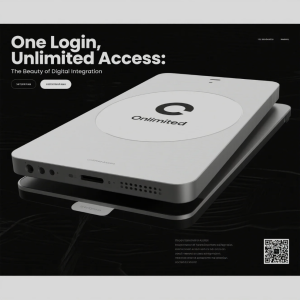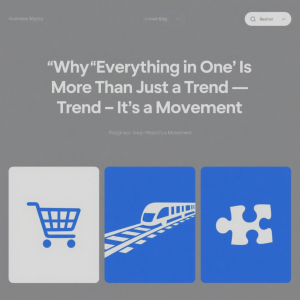In today’s fast-paced world, consumers value convenience, variety, and seamless experiences more than ever. All-in-one brands—those that combine multiple services, products, or experiences under a single umbrella—are transforming how people shop, work, and live. From tech platforms offering entertainment and communication to lifestyle brands integrating shopping, wellness, and financial tools, the all-in-one concept is shaping the future of business.
This article explores why all-in-one brands are gaining momentum, how they benefit consumers, and what the future holds for this innovative approach.
🛍 What Are All-in-One Brands?
All-in-one brands consolidate multiple offerings into a single platform or ecosystem. Examples include:
- Tech platforms like super-apps that combine messaging, payments, shopping, and transportation.
- Retail brands offering groceries, electronics, and lifestyle products in one store.
- Lifestyle and wellness brands that integrate fitness, nutrition, and e-commerce solutions.
The core idea is simplicity and convenience—giving consumers everything they need without switching platforms.
🎯 Why Consumers Love All-in-One Solutions
- Convenience and Time Savings
Consumers no longer need to juggle multiple accounts or services. With everything in one place, tasks become faster and easier. - Integrated Experience
Products and services work seamlessly together, enhancing user satisfaction and creating a cohesive brand experience. - Cost Efficiency
Bundled services often offer discounts or loyalty rewards, making all-in-one solutions more cost-effective than piecemeal alternatives. - Personalization
Centralized platforms can leverage user data to offer tailored recommendations, ensuring every interaction feels relevant and engaging.
🔗 How All-in-One Brands Are Shaping Industries
- E-Commerce: Platforms now combine shopping, reviews, and financial services like payment installments or wallets.
- Entertainment: Super-apps integrate music, streaming, social networking, and gaming, keeping users engaged longer.
- Health & Wellness: Brands combine telemedicine, fitness tracking, and nutrition planning in one app.
- Finance & Banking: One platform can offer payments, investments, and insurance under a single account.
This cross-industry integration demonstrates that all-in-one models are not limited to retail—they’re transforming the entire economy.
🌐 The Role of Technology
Technology is the backbone of all-in-one brands. Key innovations include:
- Artificial Intelligence (AI): Helps deliver personalized recommendations and automate tasks.
- Cloud Computing: Ensures seamless access across devices and locations.
- Mobile Optimization: Mobile-first platforms allow users to access multiple services anywhere, anytime.
- Data Analytics: Insights from user behavior improve offerings and increase engagement.
Without robust technology, the all-in-one concept simply wouldn’t be possible.
🔮 The Future of All-in-One Brands
Looking ahead, all-in-one brands will continue to blur industry boundaries. Key trends include:
- Hyper-Personalization: Platforms will anticipate user needs, creating a proactive experience.
- Sustainability Integration: Eco-friendly products and services will become standard.
- Global Expansion: Platforms will increasingly cater to cross-border users, combining services across regions.
- Enhanced Immersive Experiences: AR and VR could allow users to explore products, entertainment, and social interactions in entirely new ways.
The future points to a world where convenience, customization, and seamless experiences are not just perks—they’re the expectation.
Conclusion
All-in-one brands represent a shift toward efficiency, integration, and user-centric design. By providing endless possibilities in a single platform or service, they meet modern consumers’ evolving needs and redefine how industries operate. For businesses and consumers alike, the all-in-one model promises a future where everything you want—and more—is truly just one place away.




